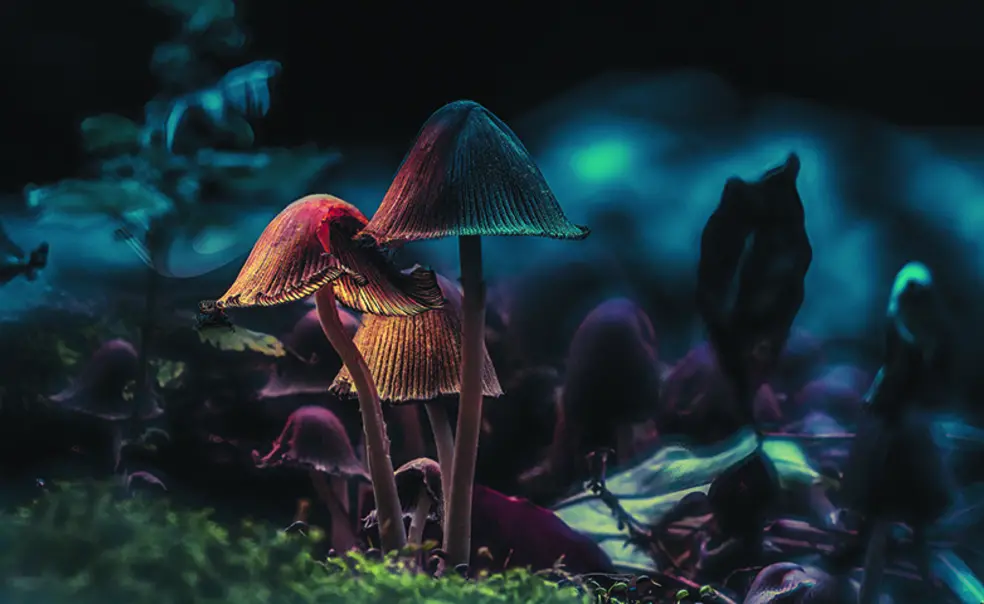Essay: Ecopoetics Probes Link Between People and the Planet
‘This notion resonates with me emotionally. None of us is alone,’ says Serena Alagappan ’20
In an English course my junior year at Princeton, Professor Rebecca Rainof *08 assigned a book by Briallen Hopper *10 that included the essay “Lean On.” In it, Hopper protests the pursuit of Emersonian self-reliance with an environmental metaphor. She doesn’t think of people as “an orderly orchard of freestanding trees.” She sees them instead “as an overgrown tangle of undergrowth, mulch, mushrooms, and moss, or as an indivisible ocean of brinedrops.”
This interpersonal metaphor inspired me to write my own ecopoetry.
You might be wondering what ecopoetics is. It’s a comparatively new genre, and one influenced by the effect human beings are having on the planet. Ecopoetry radicalizes “nature poetry” by furnishing far less utopian visions than the romantics did. Although the genre burgeoned in the late 20th century — as climate change and global warming rose in public consciousness — ecopoetics can be traced to ancient traditions that have long imagined ecological worldviews such as Japanese meditative verse and classical Indian spiritual writings.
Ecopoetics can be traced to ancient traditions that have long imagined ecological worldviews such as Japanese meditative verse and classical Indian spiritual writings.
Critics propose different criteria, but one point many agree on is that all things should be viewed in relation to one another. Ecopoems in essence probe the inextricable link between people and the planet. This notion resonates with me emotionally. None of us is alone. It’s a calling to nurture.
In the poem “Nature and Panic” by C.K. Williams, who served on Princeton’s creative writing faculty for 20 years, he writes “beauty won’t save the world from the depredations with which it’s already been savaged, but it can save us from the enervating despair that is the outcome of panic, that paralysis that might keep us from doing what we can to confront what’s before us.”
Ecopoets meditate on the tension of dread and wonder through their lyricism. As we meet the shared panic of a climate crisis, dwindling biodiversity, and environmental injustice, Williams’ words offer profound solace: “Beauty saves us. Beauty will save us. The world, though, is still ours to cherish, and ours to protect.” Notice how “beauty” is omitted from Williams’ final line. The conviction in poetry’s redemptive potential heralds an unequivocal call to action.
At Princeton, this year’s Contemporary Poetry Colloquium is focusing on ecopoetics. Featuring the work of Kimberly Bain *20, Anna Lowenhaupt Tsing, Cary Wolfe, and more, the speaker series explores the relationship between writing and the environment, as well as the purpose and impact of this form of expression. It challenges us to consider how poetry and art can serve and inspire amid existential threats to our environment.
I hope this writing resonates with you. If we realize that human beings and our environment are interconnected and vulnerable, we might change our behavior, transform our communication, and take more care in our treatment of one another and the Earth.
Serena Alagappan ’20 is a Rhodes scholar who studied comparative literature and creative writing at Princeton. Her forthcoming pamphlet “Sensitive to Temperature” will be published in June 2023.
After the Mushroom at the End of the World
These, remedial gestures: how
a spinning bulk of garbage in
the sea becomes a Holy Vortex
for a plastic bag’s vagrancy,
how landfill picking transforms
for garden-artists: pluck, prune,
and glean like you’re foraging
treasure on behalf of trash,
how after nuclear disaster,
mushrooms grow on reactor walls,
harnessing radiation like purple
alliums photosynthesize light,
happy globes bursting, these
flowers can nurture budding
stars in climates on the drier side,
drought-tolerant, they’ll keep alive.
I read once, that there’s a kind
of love that doesn’t extend itself
both ways between two people
equally because it doesn’t have to.
When air explodes hot and buoyant,
it bubbles and expands, waltzes with
open legs and a rising skirt, condensing
debris, sucking energy from decay.
What’s left at the end of the world,
besides lichen, missile clouds blocking
the sun, and a harvest for two that
can only be tilled by one?
Author’s Note: The fifth stanza references the end of Carl Phillips’ poem “If You Go Away” and the title is inspired by Anna Tsing’s “The Mushroom at the End of the World.” Originally published in the Colorado Review.











No responses yet